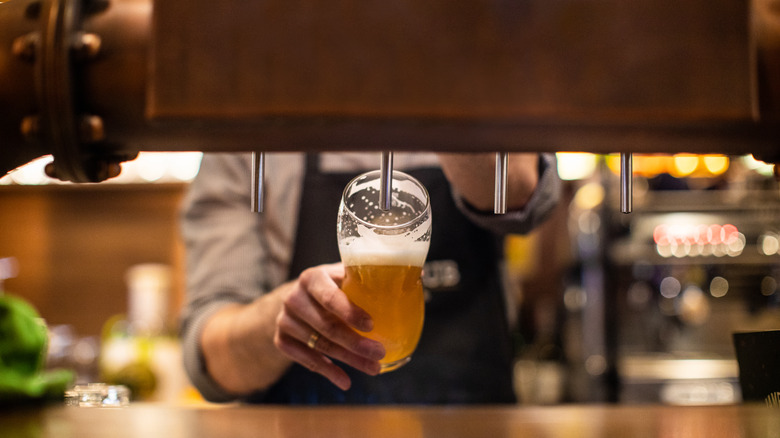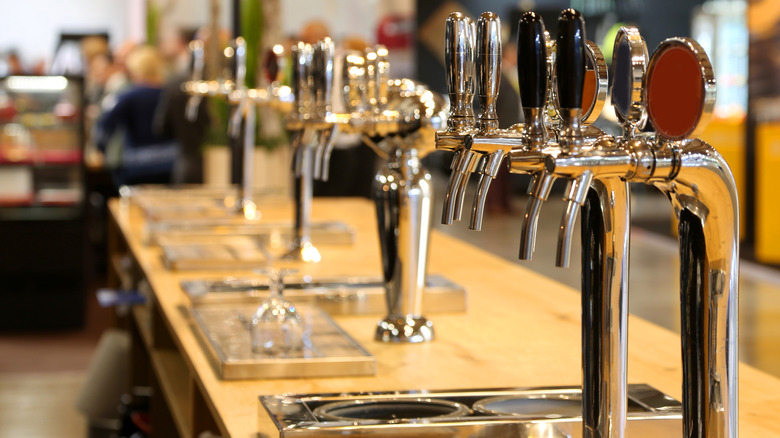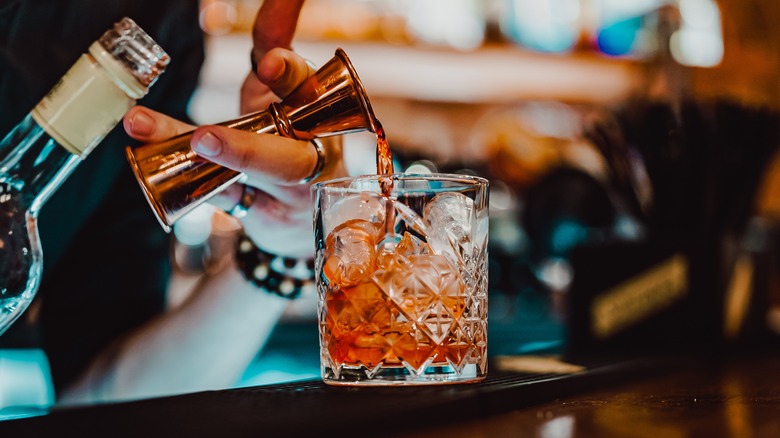The Gross Reason Bartenders Usually Avoid Ordering Draft Beer
Heading down to the local pub for a cold pint can be a great way to wind down after a long day and get some time to socialize. And, of course, there's something special about sipping on a perfectly poured, frothy, foamy beer straight from the tap instead of cracking open a cold one at home.
What you might not realize, however, is that ordering a draft beer at your neighborhood bar may not always be such a good idea. In fact, bartenders often tend to avoid ordering brews served this way when they go out to watering holes on a night off. This is because draft beer lines aren't cleaned as often as you might think, which can affect the flavor of your brew, giving it an unpleasant taste. Worse still, when the lines aren't cleaned regularly, contaminants can start to accumulate, making their way into your drink.
What happens when bartenders don't clean the draft beer lines
According to the Brewer's Association for Small & Independent Craft Brewers, tap lines (which distribute the beer from a keg to the tap) should be cleaned every two weeks. If they're not, several contaminants can build up within the lines. Yeast and mold are the two big ones that grow on the parts of the tap machinery that have contact with air, such as faucets and drains. These two are often hard to see in your beer, although when growing on the machinery, they can show up as white or green growths, respectively. Both contaminants are usually harmless, but the mold, in particular, can sometimes cause health concerns, meaning it's best to avoid tap lines with these growths.
Then, there's beerstone, a deposit made primarily of calcium oxalate. This deposit accumulates in your tap lines and eventually falls off, leaving residue in your beer. This nasty residue can shorten your brew's shelf-life and leave it with unpleasant flavors.
Finally, don't forget about bacteria, which can cause your drink to smell like rotten eggs or take on another unpleasant aroma. It can also lead to unwanted sour, vinegary flavors and give your drink a dull and opaque look. All that can lead to a brew that's far from refreshing when you want something fresh at the bar.
Other beverages bartenders avoid
Draft beers aren't the only alcoholic drinks bartenders tend to steer clear of when they're out for a fun night; another is wine. This is because it's tough to know how long the wine bottle has been open, meaning it could have been oxidizing for a while. Worse yet, not all bars store wine bottles at the correct temperatures, which can also ruin the drink. These factors can lead your glass of vino to take on a different color and pick up nutty or vinegary flavors.
Another seemingly innocuous drink you may want to avoid is an espresso martini. While these drinks are like dessert in a glass and photograph well for social media, many bars don't have espresso machines, meaning they're using substitutions, which won't give you the same smooth quality.
Finally, another cocktail to skip is anything batched. Like draft beer lines, the equipment bartenders use to make batch cocktails doesn't always get cleaned as often as it should, leading to contaminants in the drink. If you go out for a drink, bartenders suggest a simple gin and tonic or rum and coke, which is a much safer way. Plus, they're not overly complicated drinks that could be made sub-par during a rush.


